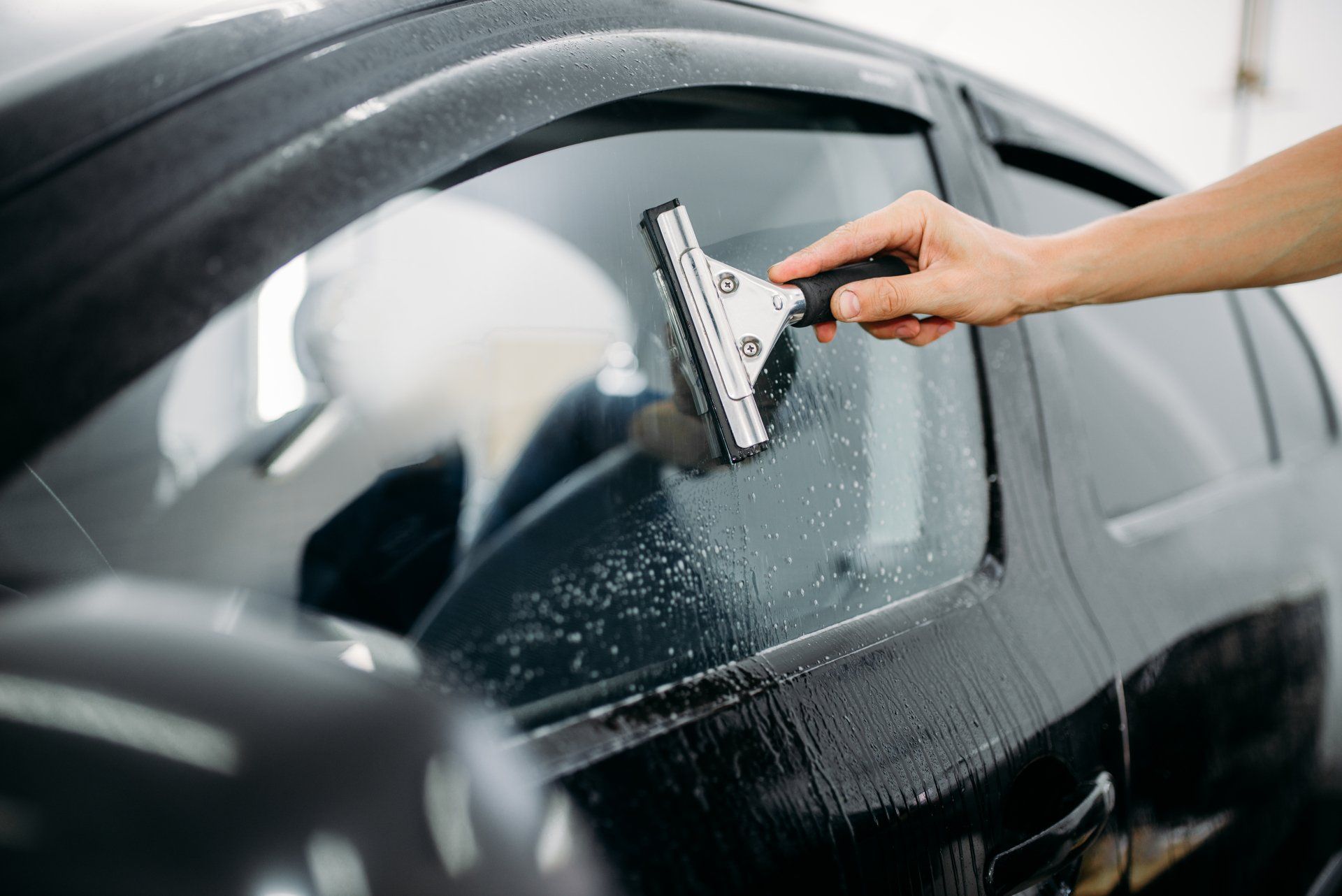Recognizing the Different Sorts Of Auto Window Tinting: Which One Is Right for You?
The choice of auto window tinting can considerably influence both the performance and aesthetics of your vehicle. With different choices available, such as dyed, metalized, ceramic, and crossbreed colors, each presents distinctive advantages customized to particular demands and preferences. Recognizing these distinctions is crucial for making an educated choice that lines up with your way of living and budget plan. As you take into consideration the effects of each type, it pleads the question: which elements will inevitably direct your decision in this multifaceted landscape?
Overview of Auto Window Tinting
Car window tinting is a popular modification among lorry proprietors, providing both visual allure and practical benefits. By using a thin film to car windows, proprietors can boost the appearance of their automobiles while also reaping considerable functional benefits. The primary function of window tinting is to lower glare and warm from the sunlight, which can lead to a more comfortable driving experience. Furthermore, tinted home windows help protect the interior of the vehicle from unsafe UV rays, minimizing the threat of fading and deterioration of furniture and control panel products.
Colored windows can hinder potential burglars by making it more difficult to see belongings left inside the vehicle. Eventually, automobile home window tinting offers as a multifunctional enhancement that combines design with safety and security, making it a worthwhile consideration for lorry owners looking for to enhance their driving experience - Chavez Auto Detailing Window Tinting.
Sorts Of Window Tinting
Exploring the different kinds of window tinting exposes a range of choices tailored to fulfill different needs and choices. The most usual kinds include dyed, metalized, ceramic, and hybrid colors.
Dyed window tint entails a layer of color related to the film, lowering and offering a streamlined appearance glare. While it successfully blocks UV rays, it might not offer the very same degree of warm rejection as various other types.
Metalized window tint integrates little metallic particles that reflect heat and UV rays. This kind boosts resilience and adds toughness to the glass yet can conflict with electronic signals, such as GPS and cell phone reception.
Ceramic window tint is a premium choice that uses innovative innovation to supply premium heat denial and UV security without the drawbacks of metal disturbance. It maintains presence while providing a high degree of convenience.
Hybrid tint combines colored and metalized aspects, supplying a well balanced option that uses both visual appeal and efficiency. Each type has special attributes that influence variables like appearance, warm denial, and signal interference, enabling customers to pick based upon specific demands and preferences.
Advantages of Each Color Kind

Metalized home window color, on the other hand, boosts resilience and warmth rejection. The metal particles embedded in the film reflect warm and UV rays, therefore keeping a cooler interior and protecting furniture from fading. This type likewise adds an extra layer of privacy as a result of its reflective residential or commercial properties.
Ceramic window color is acclaimed for its superior efficiency. It blocks approximately 99% of UV rays and considerably reduces warm without hindering digital signals, making it suitable for modern lorries geared up with innovative modern technology. Although it often tends to be costlier, its long life and performance usually warrant the investment.
Factors to Take Into Consideration
When click for source picking the appropriate window tint for a vehicle, numerous critical elements come into play that can dramatically affect the decision. The legal regulations concerning window tinting vary by state and locality. Comprehending these legislations is important to make sure and avoid possible fines compliance with local requirements.
Another vital factor to consider is the degree of warm and UV defense wanted. Different color types provide varying degrees of warmth being rejected and UV security, affecting both convenience and the longevity of the vehicle's inside. In addition, one need to think about the visual charm of the tint, as some choices might enhance the car's look while others might take away from it.

Making Your Decision
After considering the different factors associated with choosing the right home window tint, the decision-making procedure can begin. Beginning by examining your main goals for tinting. Whether your focus gets on UV security, heat decrease, personal privacy, or aesthetics will significantly affect your option.
Next, evaluate the lawful constraints in your location regarding home window color darkness and reflectivity (Chavez Auto Detailing Window Tinting). Compliance with neighborhood laws is vital to make certain and avoid fines security

In addition, take into consideration the long life and service warranty of the product. Buying a higher-quality film may at first set you back more yet can save money with time with durability and reduced demand for replacement.
Verdict
In final thought, choosing the proper type of auto window tinting necessitates cautious consideration of private demands and preferences. Each color kind-- colored, metalized, ceramic, and hybrid-- supplies unique benefits, ranging from cost-effectiveness to boosted Read Full Report longevity and UV protection.
Each kind of home window tinting offers distinct benefits that provide to varying requirements and choices. Dyed home window color is prominent for its aesthetic charm, supplying a sleek appearance while lowering glare and obstructing harmful UV rays.Metalized window color, on the various other hand, improves sturdiness and warm rejection.When selecting the ideal window tint for an automobile, numerous crucial variables come right into play that can dramatically affect the final decision.In final thought, picking the appropriate kind of automobile window tinting necessitates careful consideration of individual needs and preferences.